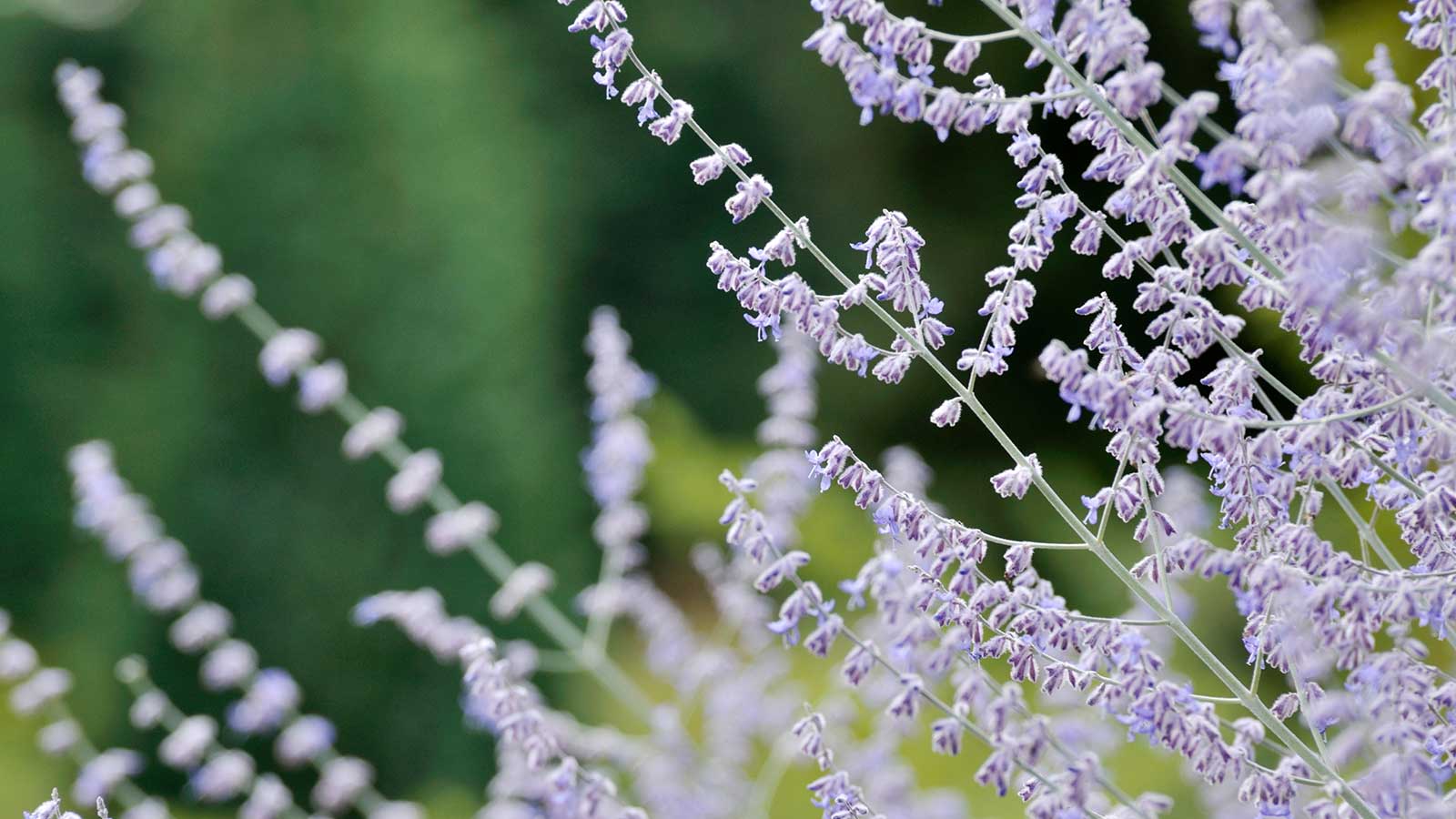Q: I have an established Russian sage in my front yard. I love its vibrant purple flowers just as much as visiting bees and butterflies do, and I'd like to grow a few more around my backyard patio. Is it possible to propagate my existing plant, to save having to buy new ones? A: Russian sage ( Salvia yangii ) is indeed a great plant for pollinators .
And, as it's drought-tolerant and deer-resistant , it's easy to look after, too, flowering year after year if conditions are right. There are a couple of ways to propagate these summer bloomers: by taking plant cuttings and by dividing the plants . Below, you'll find plenty of expert tips on both approaches, including step-by-step instructions.

The vibrant blooms add a splash of color to the garden Whichever propagation method you choose, remember to ensure the final planting location for your new plants is suitable. Plenty of sun and well-draining soil is a must for Russian sage to thrive. How to propagate Russian sage by dividing the plants Established plants can be carefully split up with a spade Dividing these perennials is quick and straightforward, with instant results.
According to Brock Ingham of Bigger Garden, it's best to divide Russian sage in early spring as new growth begins, or in the fall after flowering has ended. He shares his step-by-step tips below. Besides giving you new plants for free, dividing Russian sage has another benefit.
Anna Ohler , owner of Bright Lane Gardens nursery, explains that it often rejuvenates older plants, encouraging new growth. Because of this, it's particularly helpful if you have a large, aging clump of Russian sage that is not as healthy as it has been in previous years. Top tip: Avoid dividing Russian sage during warm weather; this can stress the plant, Brock warns.
This well-rated knife has a sharp, stainless steel blade, making it ideal for dividing up plants. It can be used for weeding, too. Brock is an experienced gardener who is studying to become a horticultural expert.
With over a decade of experience, he has become gifted at growing a variety of unique and rare plants. He's also a strong advocate for farmers and knows that behind every crop, there's a farmer with a story to tell. Anna is an avid plant hobbyist and the owner and operator of Bright Lane Gardens, a boutique plant nursery in Northern Michigan.
With over a decade of experience in gardening and landscaping, she takes every opportunity to share her knowledge on all things plant-related. She also runs the company's YouTube channel , which is full of practical advice. How to propagate Russian sage by taking cuttings Snip off sections of healthy growth to plant Brock recommends taking cuttings of Russian sage in late spring to early summer, when the plant is actively growing but hasn’t flowered yet.
If you decide to do it in late spring, you may wish to cut back your Russian sage at the same time. Roots should begin to form in three to six weeks – you can give the cutting a gentle tug to check for resistance. 'Once they’re well-established, the new plant can be transplanted into the garden or a larger pot,' Brock says.
Top tip: Janice points out that not all cuttings will take root, so make sure you take more than you need. Dip the ends of your Russian sage cuttings into this popular rooting powder to stimulate quick growth. FAQs There are a few pros and cons of each method, so pick the approach that works best for you.
By propagating Russian sage via cuttings, you can create lots of new plants from a single mature one, notes Brock Ingham of Bigger Garden. However, not all of them will take root, and it does require a bit of patience and attention, he says. Dividing Russian sage is great if you want to give older plants a new lease of life.
Plus, Brock notes that it generally has a higher success rate compared to propagation via cuttings. On the downside, he highlights how it's more labor-intensive, and the number of new plants you can create is limited by the size of the original plant. Janice Cox , a National Garden Bureau member says, 'Some people also have luck rooting cuttings in water, but I have found this takes a bit longer.
' The benefit of propagating cuttings in water is you can see the roots grow. Once a good system has established, you can transplant it into soil. If you want to give it a go, remember to change the water frequently so it stays clean, and avoid making the common water propagation mistakes .
There are lots of other plants that can be propagated at home. Our guides on how to propagate zinnias from cuttings and how to propagate chrysanthemums are full of practical advice to help you fill your yard with more flowers for free..



















